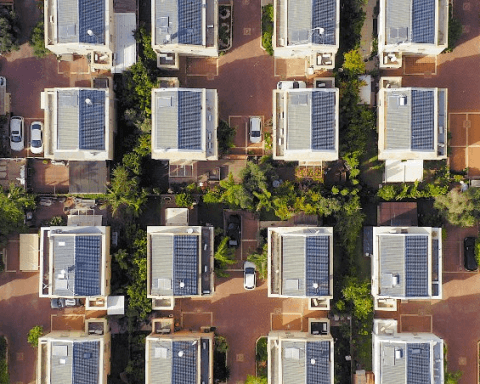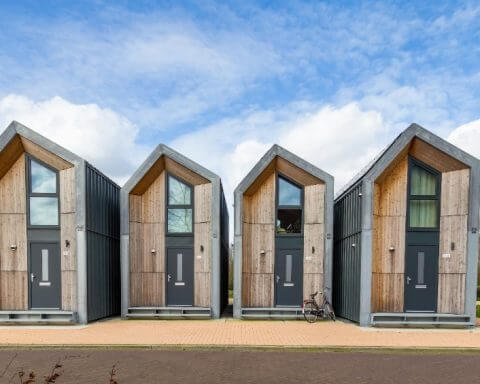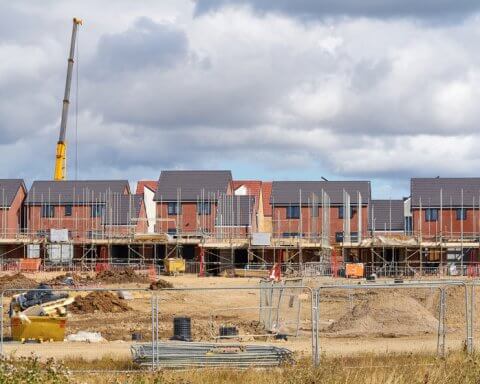This article originally appeared on the Future Food 2050 website.
As Electrolux design director Thomas Johansson heads off to his Stockholm office in the morning, his phone buzzes with a message from his refrigerator: Lunch is ready to be picked up at a nearby restaurant. Through links to his smartphone and calendar, the refrigerator has already determined that Johansson forgot the sack lunch he was going to eat at his desk today, so it has ordered one of Johansson’s favorite meals at an eatery he passes on his route to work. Later in the day, the refrigerator contacts Johansson again: Time to pick up some snacks for his post-work bicycle ride, along with the missing ingredients for a cake his wife will make for their daughter’s birthday the next day.
Right now this scenario happens only in Johansson’s imagination. But the veteran designer for Swedish appliance giant Electrolux predicts that hyperconnection will define our relationship with the kitchen by the year 2050. Better data, he says, will be delivered by smart apps using increasingly sophisticated learning algorithms.
Johansson points to the algorithms that currently allow Facebook and Google, for example, to create relatively accurate portraits of users’ preferences according to their behavior. Your refrigerator would do the same, knowing where you are likely to be, and that “on Wednesday, your preference is this type of food,” says Johansson. “Your coffee machine at home: It [will know] you are at home, you’ve woken up, it’s connected to your calendar and it makes coffee directly. Products will be connected to you … your senses, dietary needs and more, perhaps even monitoring your health [and] proposing menus.”
Inspiration all around
Johansson has always been interested in products that people use in their everyday lives: As a child, he took things apart to see how they were made and how they could be put back together—“even the salt mill at a restaurant,” Johansson confesses. “My mom says she was always aggravated.”
Today he finds inspiration for futuristic kitchen appliance design in his love of good food, but also in the waste he sees in everyday life and the need to make it easier to eat healthy foods.
“People want to indulge in food, they are knowledgeable about food. That’s why you need smart technology—helping, supporting and inspiring people to be healthy,” says Johansson. “How do you take care of food—how it enters the home, preserve it, prepare it—in a respectful way? [How do you keep the] nutrients, the color, taste and texture? This is the base for all of our work. Steam ovens, the smart fridge—it’s about taste.”
He also draws inspiration from the Electrolux Design Lab competition, in which young designers from around the world compete each year to create appliance designs that fit a particular theme. The 2014 theme, for example, was creating a healthy home—including how to prepare or store food for “culinary enjoyment”—with the 2014 winners announced in November 2014.
Cooking from the couch
By the year 2050, says Johansson, the kitchen may no longer even be a kitchen as we know it. Instead, its elements may be incorporated into the living room, with embedded appliances disappearing into walls and working surfaces.
The fridge, for example, could be a series of a dozen hexagonal-shaped storage spaces set into a living room wall, adjacent to the ovens and “smart” pantry. As imagined for a design in the 2014 Electrolux Design Lab competition, each container would use a vacuum system to extend the life of the food inside. The modules would set their own internal temperatures and humidity based on the types of foods they hold. Some would be chilled like a regular refrigerator to keep beverages cold, but others might be close to room temperature, say, for tomatoes.
Johansson hypothesizes that instructions might be embedded on the containers and in the wrappers housing the foods, perhaps using nanomaterials or other labeling. A piece of meat wrapped in “smart” plastic with nanosensors, for instance, would be able to communicate to the refrigerator that it is a 1-pound steak. Other refrigerator storage spaces would bathe vegetables in the correct sun-mimicking wavelengths and temperatures to keep them green and alive as long as possible—and perhaps even growing. In addition to keeping food fresher, says Johansson, these technological advances would result in less spoilage and food waste.
In the same way that a smart refrigerator might work in the future, a smart pantry would maintain a log of its contents, says Johansson, while storing different foodstuffs that don’t require refrigeration but might need some other kind of treatment. Perhaps a slightly cooler level would store potatoes and root vegetables, while cameras would scan packages on the shelves so the pantry could consult with the refrigerator on recipes that require baking ingredients like flour or sugar.
Meanwhile, a smart oven set into the wall next to the refrigerator modules might be able to detect the humidity and internal temperature of the food it cooks. When the oven cooks a juicy steak, says Johansson, it could scan the meat with color and thermal detectors to make sure the end result is just the way he likes it—rare. The oven could double as a steamer, programmed to cook vegetables for maximum preserved nutritional value.
Intelligent integration
Johansson says the ultimate goal for the next generation of kitchen technologies is individual health and well-being. Linking kitchen appliances to personal devices that monitor blood sugar levels, dietary habits, and prescription or other medicines would enable the appliances to use this information in evaluating the family’s food needs. This would require “smart” machines linked to larger systems via the Internet and internal information “clouds” that could make some decisions on their own.
A key to much of this technology will be ever-smaller batteries, or perhaps some other form of portable power that takes up very little space. One idea from the Design Lab competition that particularly appeals to Johansson is a floating sphere to store food. With a simple verbal direction from a cook, the sphere would unhook from its ceiling docking space and float downward as an autonomous vehicle, like a tiny self-piloted helicopter or bubble. After unloading the food, the cook could send the bubble back to the ceiling where it would plug in again, to re-juice its batteries. But finding tiny batteries that last and that can retain and regain a charge readily is the next immediate step in the work being done now, says Johansson.
Johansson says he eventually wants to expand Electrolux’s healthy home concept even further: “I live in the city, so I think about a healthy apartment building. Expand that to a healthy city, a healthy society,” he says.
Smart appliances of the future will be “thinking” of their owners’ health, Johansson says, but also about electricity use, how they fit into larger grids and more. “That’s the interesting thing: How do we weave together new design solutions, let [them] be adaptive, package them in a sustainable way so we take care of the only planet we have—why not do it?”





